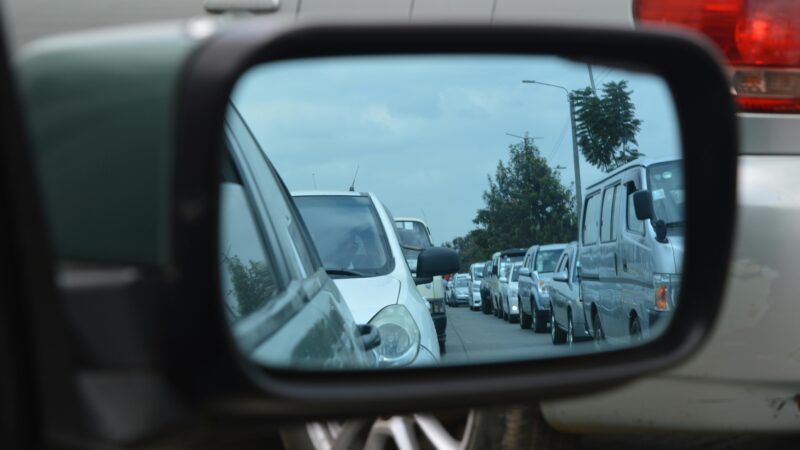Insurance is always a risky affair, not so much for the customer, but for the insurance company for sure. Insurers don’t always have a clear idea of how safe or risky a customer is, which prevents charging the right premium to the customers. One area of such issues is the car insurance. Insurers have little idea of how good or risky a driver is, and there is basically no way an insurer can check for the driving behavior of the customer. Yes, the insurer can check for any history of accidents and vehicle breakdown, but in case the customer is a young lad who has just begun driving his brand new car, the insurer may have little visibility into how well does the person drive, and what must be the suitable premium for him.
How can insurance companies deal with such issues in the future? How should the insurers plan to change their operating models, so that they have better visibility into the driving behavior of their customers? Is there any means or technology available that insurers can leverage to have a behavior-based insurance scheme in place?
The answer to all such futuristic questions at Idea74 is always a big “Yes”. What if we told you that behavior-based insurance is no longer so much a thing of the future, but has been a muse for insurance companies since sometime already? Telematics has already made it possible for insurance companies to track the driving behavior of the customers and then charge the right premium. Yes, it has its own limitations and that’s where connected cars will come to picture to make insurance much more robust, foolproof and transparent. The future of car insurance is going to be all about the data analytics, IoT and blockchain.
Connected cars track driving behavior
The cars of tomorrow will be more intelligent than ever and will be connected to the car insurance companies and the state transport departments too. All driving parameters, like average speed of driving, frequency of braking, lane changing behavior and reckless driving will be monitored. The speedometer readings will make recording average speed easy, while the accelerometer will help to check for any kind of reckless driving, as the car swings a lot during such kind of rash driving. The number of times brakes are applied and the time period between them will be tracked, analyzed and uploaded on cloud.
Any accident that the car would have met with will also be recorded and will help in the IoT-enabled post-accident investigation. All details of the speed, braking time and the impact on the car will be added as a block in the distributed ledger.
We cannot have each car uploading real-time live data on the cloud, since that will overwhelm the data storing capacities of the local governments. This is where edge intelligence will be instrumental in getting analytics close to the cars themselves. All the real-time data will be analyzed inside the vehicle itself and then the processed relevant data will be uploaded on the cloud. This data will be automatically get shared with the state transport authorities and since all of the data is authentic, it will be stored permanently on blockchain network. The driver and the traffic management institutions will have access to this data using their unique IDs, which will lead to transparency among all the stakeholders in the system.
Insurance goes driven by behavior-based data
When a person will approach an insurance company for availing car insurance scheme, the insurer will ask for the driving behavior details that have been stored on the blockchain. Using a certain ID and access right to only view data, and not download it, the insurer will be able to check for the risk profile of the customer. Since blockchain contains data in immutable fashion, insurer will be assured of accessing unaltered data. Therefore, driving behavior will form the basis of calculating the right premium for the customer, and the customer will have no scope of defrauding the insurer with false information or incomplete data. Deep learning algorithms will analyze the driving data and will figure out how much of risk is posed by the driver. The autonomous mapping of premium slabs to the customers will take away subjectivity of the insurance agents, and will bring objectivity of the algorithms into the system.
Real-time tracking of drivers to continue
A scenario may also arise where the driver manages to drive well for a few weeks, just to get a good driving behavior score and get safe driving behavior stored on blockchain, just before buying a car insurance scheme. And then, once a lower premium has been secured, the driver can go about driving recklessly. Such a scenario also amounts to deceit and will need to be dealt with stringently.
Insurance companies will not only rely on historical driving data, but will also capture driving behavior in real-time. All the necessary parameters which are being uploaded on cloud by the cars will be accessible to the insurer and driving behavior analytics will run continuously on the live data. This will ensure that the insurance firm increases the premium against any observation of risky driving behavior. On the other hand, customers who have been charged a higher premium initially can also hope to get their premiums decreased if they improve their driving skills. This will go a long way in improving the driving skills of people and drivers will be incentivized for safe driving on the roads, thereby making insurance firms a direct contributor to road safety.
Zero scope of accident fraud
Sometimes, insurance policy holders try to defraud the insurer by faking an accident, in order to claim money. This leads to unnecessary loss for the insurance firms. The connected car insurance will prevent this by analyzing the driving data, particularly during the time of accident. In case forensic teams of the insurer don’t find the car recording any sudden braking at high speed, or sudden turn of the car or sudden change of lanes, then it will point towards a staged accident. The insurer will get to know of the potential fraud and will be able to move to court based on actual data and its interpretations.
In some cases, the accident is genuine. However, the policyholder tries to claim insurance money from multiple insurance firms. This is again illegal, but in the traditional system, the lack of communication between insurance firms creates a loophole.
The blockchain network will be a good solution for this issue. All insurance companies will be connected to a separate distributed ledger and will update any action for its customers on the network. In case a policyholder claims insurance with one firm, that firm will first check if any claim has been made for the same vehicle registration number. If no, then the firm will give a go-ahead to the smart contract, which will automatically execute to upload all details of its customer’s claim on blockchain and process the payment for the customer. Now, if the same customer goes to another insurance firm to claim money for the accident, which the second firm will be able to verify on blockchain that a claim has already been processed for this accident case and therefore, the system will deny any further processing. The smart contract will block any further processing of insurance claim for a definite period of time. This will ensure that a policyholder does not avail multiple claims for the same case.
Closing thoughts
Insurance sector needs to be much more resilient and much more transparent to its customers. At the same time, it also deserves transparency from its policyholders. However, trust can always be expected, but not always ensured. Connected cars enabled by IoT sensors that upload data on blockchain will make the system much more robust and will keep any kind of traditional defrauding methods at bay. The future of insurance is connected and digital, and it is going to be the new normal tomorrow.










